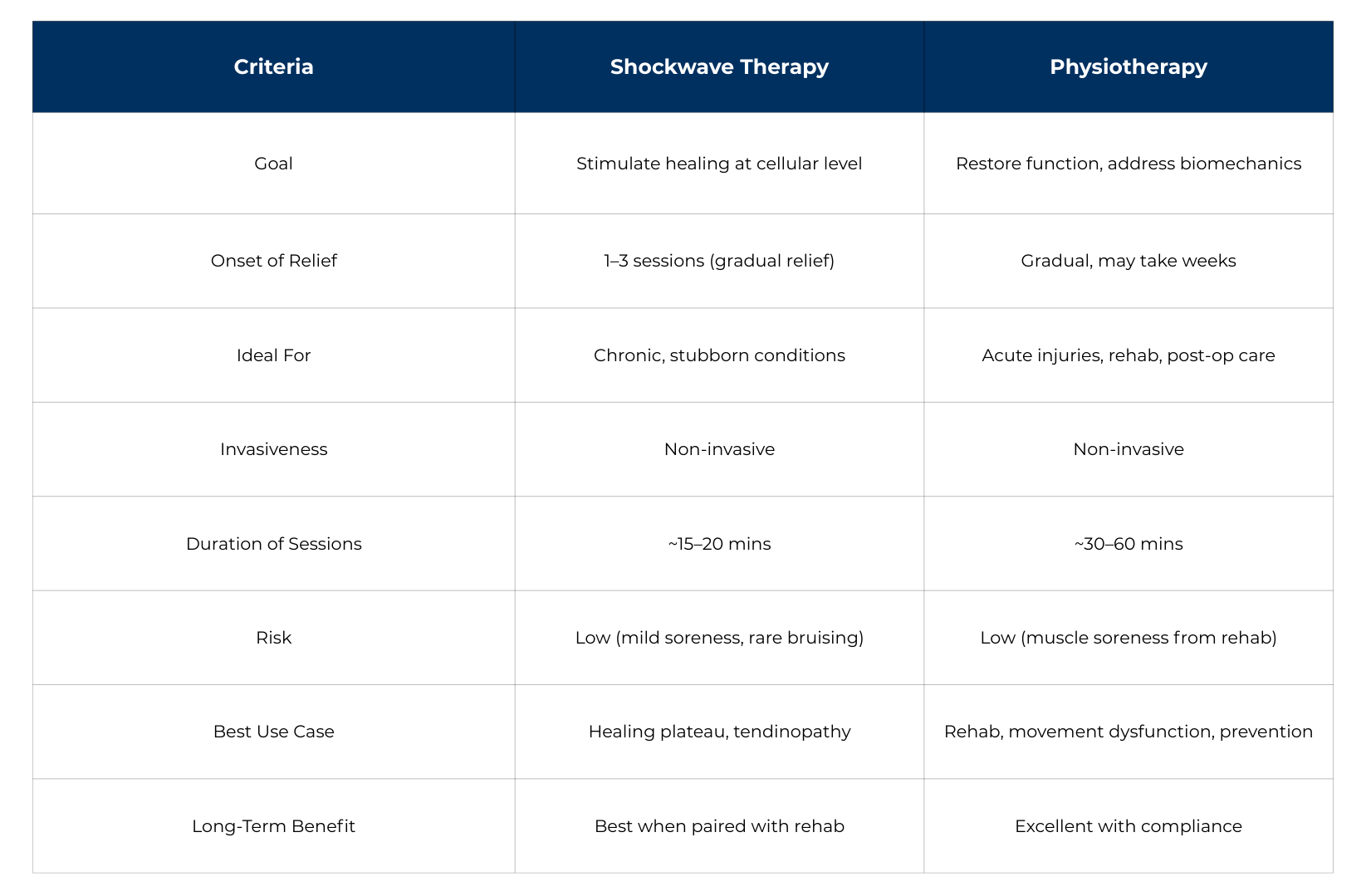Shockwave Therapy vs Physiotherapy: Which Is More Effective for Chronic Musculoskeletal Pain?
Introduction
If you’ve been dealing with a nagging injury — like plantar fasciitis, tennis elbow, or Achilles tendinopathy — you’ve likely been told to try physiotherapy. But what happens when physio alone doesn’t fully resolve the issue?
That’s where shockwave therapy (ESWT) enters the conversation. At Tensegrity Sports Clinics, we integrate both approaches depending on your condition and stage of recovery. Let’s break down how they work and when one might be more effective than the other.
What Is Physiotherapy?
Physiotherapy involves manual therapy, exercise prescription, education, and sometimes adjunctive modalities (e.g., ultrasound, dry needling). It aims to:
- Restore movement and mobility
- Improve strength and stability
- Address biomechanical dysfunction
- Reduce pain and inflammation over time
It’s the gold standard first-line treatment for most musculoskeletal conditions.
What Is Shockwave Therapy?
Shockwave therapy uses high-frequency acoustic waves to stimulate healing in soft tissues. It works by:
- Increasing local blood flow
- Stimulating collagen synthesis
- Reducing chronic inflammation
- Desensitising nerve endings and trigger points
It’s especially effective when healing has plateaued and tissue regeneration is needed.
When Physiotherapy Isn’t Enough
Some conditions reach a healing stalemate — where exercises, mobility drills, and manual therapy aren’t enough to stimulate full recovery. This often happens in:
- Chronic tendinopathy (Achilles, patellar, gluteal)
- Plantar fasciitis
- Calcific shoulder tendinitis
- Hamstring and adductor overuse injuries
- Medial or lateral epicondylitis (tennis/golfer’s elbow)
In these cases, adding shockwave therapy to a physiotherapy regimen can dramatically improve outcomes.
Research Insights
Shockwave + Physio vs Physio Alone
Study: Rompe et al. (2009)
Participants: 150 patients with chronic plantar fasciitis
Groups: Stretching only vs shockwave therapy vs combined treatment
Outcome:
- 72% improvement in combined group
- 44% in stretching-only
- 65% in shockwave-only
Conclusion: Combining shockwave with standard physiotherapy produced the best long-term outcomes.
Chronic Tendinopathies
Systematic Review: Speed et al. (2014)
- Focused on Achilles, patellar, and gluteal tendinopathies
- Found superior pain relief and functional improvement when shockwave therapy was added to standard rehab protocols
Comparison Table: Shockwave Therapy vs Physiotherapy

Should You Choose One Over the Other?
In many cases, no. The best outcomes are often achieved when shockwave therapy is used alongside physiotherapy — especially in the chronic stage of healing. For acute injuries or post-surgical rehab, physiotherapy is usually the starting point. But if you’ve hit a wall or the injury has persisted for months, shockwave can re-ignite healing.
Conclusion
Shockwave therapy and physiotherapy aren’t competitors — they’re complementary. When used together, they offer a powerful approach to recovery, especially for stubborn tendinopathies or soft tissue injuries that haven’t responded to traditional care.
If you’re wondering which option is right for your condition, the chiropractors in Sydney and clinicians at Tensegrity Sports Clinics can assess, diagnose, and create a plan tailored to your stage of healing.
